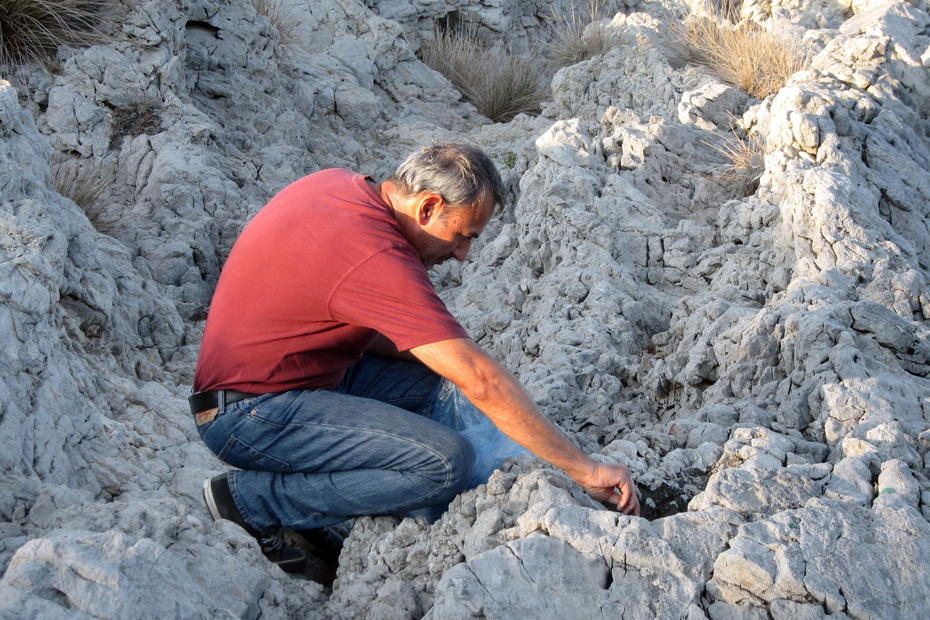Sea salt is naturally rich in calcium, magnesium and potassium as well as dozens of trace minerals. Ironically, it’s not incredibly rich in iodine. Islanders turn to seafood and other raw ingredients for that.
Sea salt deposits, at least where we were harvesting, are in the shallow basins nestled between incredibly sharp rock formations. To find them you have to take the precarious walk up and down the rocks, within splashing distance of the water.
The salt looks like beige or grey-white sludge. The crystals are big — imagine crushed peas in size. They are a mishmash of clumps, nodes and flakes all within a pool of water that is so saturated with saline that the salt crystals can’t dissolve.
I returned with two plastic bags of salt crystal sludge. Once back home I set the salt in a basin of water, picking out any debris, i.e. sand or seaweed. Then, I let this dry out (the water evaporates). Next step is to dry the salt, which I did by placing it on a shallow, nonresistant tray in the sun for two days. What I ended up with was large-crystal pure sea salt, extremely flavorful, handfuls, in other words, of the Ikarian Sea that I could sprinkle on tomatoes and more! I don’t opt to crush it, as a home cook might have done a generation ago, by spreading it out and rolling a bottle over it.







